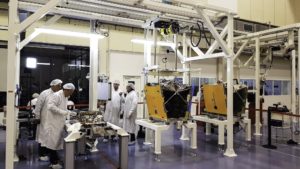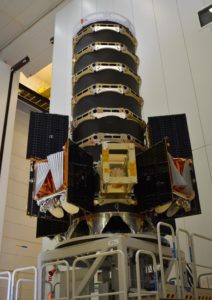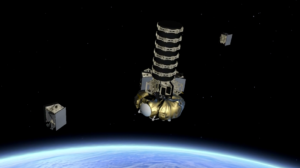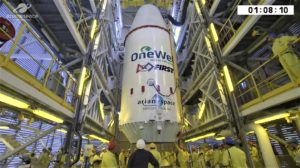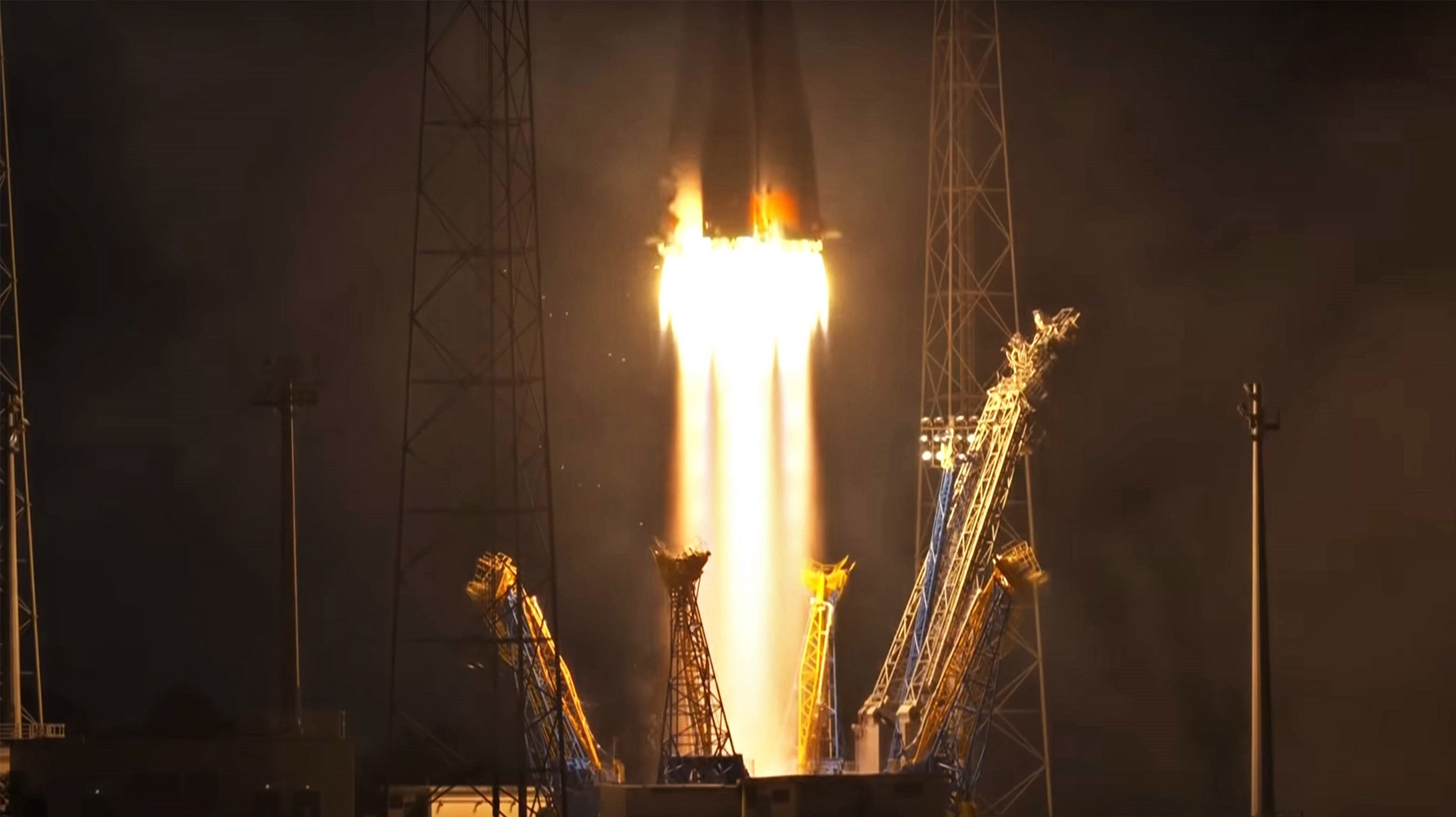
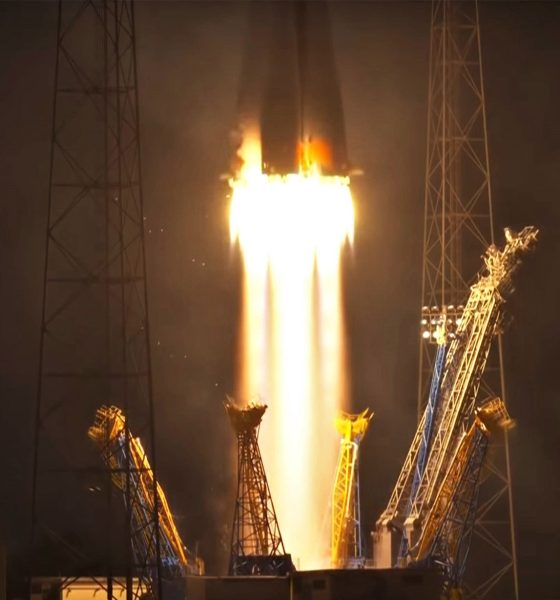
SpaceX
SpaceX’s Starlink space internet gets new competitor with OneWeb satellite launch
The most viable competitor to SpaceX’s Starlink Internet constellation has completed a demonstration launch, placing the first six OneWeb satellites in a circular orbit 1000 km (620 mi) above Earth.
Designed as a constellation of approximately 650-900 satellites, OneWeb aims to provide uninterrupted Internet access across the world with a focus on affordability for those living without a basic communications infrastructure. Assuming OneWeb’s first six spacecraft operate nominally in orbit, the first phase of the company’s constellation could be completed by late 2020 or early 2021, leading to initial operations with customers actually able to access the internet through their spacecraft.
LAUNCH! Soyuz ST-B launches with the first batch of OneWeb satellites.
Follow Along Live:https://t.co/wpIrRq5QwC pic.twitter.com/nUuIs0vkI9
— NSF – NASASpaceflight.com (@NASASpaceflight) February 27, 2019
Compared to OneWeb, SpaceX’s Starlink constellation (even in its earliest phases) is dramatically more expansive, featuring anywhere from 2-7x as many spacecraft and an overall bandwidth that is likely even greater still. As a partial consequence, Starlink spacecraft will likely be more complex and expensive to mass-produce and operate. Combined with optical (laser) interlinks that could make Starlink truly revolutionary, it remains to be seen whether the costs of high-tech solutions can be outweighed by their intrinsic benefits.
6/6 – all 6 of the satellites have successfully separated from the rocket. They will now deploy their solar panels and begin generating power from the sun, to begin their journey to provide #ConnectivityEverywhere #OneWebLaunch
— Eutelsat Group (@EutelsatGroup) February 27, 2019
Thanks to the relative simplicity and lower mass of OneWeb’s spacecraft, as well as a partnership with industry heavyweight Airbus Defence and Space and the partial completion of a Florida-based satellite factory, OneWeb undeniably has several steps up on SpaceX, at least with respect to the goal of reaching initial commercial operations as quickly as possible. SpaceX has already gained experience operating its first two demonstration satellites – known as Tintin A and B – for a full year on-orbit, but all that is known Starlink’s first operational launches is that CEO Elon Musk is dead-set on commencing deployment no later than June 2019. Meanwhile, the status of SpaceX’s production facilities is unclear, with two mid-sized buildings in Redmond, Washington known to be dedicated to the program.
An array of job posts and brief hints from primary and secondary sources indicate that the Starlink program is already heavily focused on ramping up spacecraft production after several years of development. It’s unclear if a planned second set of prototype satellites is still on the books, hinted at by Musk in the months after the first pair’s February 2018 launch debut.
- OneWeb’s preliminary satellite production line. (OneWeb)
- A visualization of satellite deployment on-orbit. (Arianespace)
- OneWeb’s first Soyuz 2 fairing. (Arianespace)
- SpaceX’s first two Starlink prototype satellites are pictured here before their inaugural launch, showing off a thoroughly utilitarian bus and several advanced components. (SpaceX)
Aside from the satellites themselves, prospective global internet constellation operators must face the equally critical and challenging task of developing a simultaneously high-performance and low-cost user terminal, the antenna and associated electronics that turn spacecraft signals into an accessible and reliable internet connection. SpaceX’s work in this direction has been silent, while OneWeb founder Greg Wyler recently began teasing and describing the company’s own work in that direction, hinting that his team has already arrived at a $15 antenna prototype capable of supporting 20-60 Mbps (megabits per second).
First two Starlink demo satellites, called Tintin A & B, deployed and communicating to Earth stations pic.twitter.com/TfI53wHEtz
— Elon Musk (@elonmusk) February 22, 2018
Meanwhile, the hopeful success of the company’s first launch will pave the way for the first full launch of OneWeb spacecraft, potentially as many as 32-36 at once on Arianespace’s Russian Soyuz 2 launch vehicle. OneWeb has 21 launches manifested on Soyuz 2 rockets, scheduled to occur at a more or less monthly cadence between the first operational launch and the completion of Phase 1’s 650-satellite constellation. Shortly after the first launch was completed, Arianespace CEO Stéphane Israël announced that it had struck a deal with OneWeb as the official customer for the first two launches of its Ariane 6 rocket, meant to debut as early as 2020.
Check out Teslarati’s newsletters for prompt updates, on-the-ground perspectives, and unique glimpses of SpaceX’s rocket launch and recovery processes!

Elon Musk
Starlink passes 9 million active customers just weeks after hitting 8 million
The milestone highlights the accelerating growth of Starlink, which has now been adding over 20,000 new users per day.

SpaceX’s Starlink satellite internet service has continued its rapid global expansion, surpassing 9 million active customers just weeks after crossing the 8 million mark.
The milestone highlights the accelerating growth of Starlink, which has now been adding over 20,000 new users per day.
9 million customers
In a post on X, SpaceX stated that Starlink now serves over 9 million active users across 155 countries, territories, and markets. The company reached 8 million customers in early November, meaning it added roughly 1 million subscribers in under seven weeks, or about 21,275 new users on average per day.
“Starlink is connecting more than 9M active customers with high-speed internet across 155 countries, territories, and many other markets,” Starlink wrote in a post on its official X account. SpaceX President Gwynne Shotwell also celebrated the milestone on X. “A huge thank you to all of our customers and congrats to the Starlink team for such an incredible product,” she wrote.
That growth rate reflects both rising demand for broadband in underserved regions and Starlink’s expanding satellite constellation, which now includes more than 9,000 low-Earth-orbit satellites designed to deliver high-speed, low-latency internet worldwide.
Starlink’s momentum
Starlink’s momentum has been building up. SpaceX reported 4.6 million Starlink customers in December 2024, followed by 7 million by August 2025, and 8 million customers in November. Independent data also suggests Starlink usage is rising sharply, with Cloudflare reporting that global web traffic from Starlink users more than doubled in 2025, as noted in an Insider report.
Starlink’s momentum is increasingly tied to SpaceX’s broader financial outlook. Elon Musk has said the satellite network is “by far” the company’s largest revenue driver, and reports suggest SpaceX may be positioning itself for an initial public offering as soon as next year, with valuations estimated as high as $1.5 trillion. Musk has also suggested in the past that Starlink could have its own IPO in the future.
News
SpaceX shades airline for seeking contract with Amazon’s Starlink rival

SpaceX employees, including its CEO Elon Musk, shaded American Airlines on social media this past weekend due to the company’s reported talks with Amazon’s Starlink rival, Leo.
Starlink has been adopted by several airlines, including United Airlines, Qatar Airways, Hawaiian Airlines, WestJet, Air France, airBaltic, and others. It has gained notoriety as an extremely solid, dependable, and reliable option for airline travel, as traditional options frequently cause users to lose connection to the internet.
Many airlines have made the switch, while others continue to mull the options available to them. American Airlines is one of them.
A report from Bloomberg indicates the airline is thinking of going with a Starlink rival owned by Amazon, called Leo. It was previously referred to as Project Kuiper.
American CEO Robert Isom said (via Bloomberg):
“While there’s Starlink, there are other low-Earth-orbit satellite opportunities that we can look at. We’re making sure that American is going to have what our customers need.”
Isom also said American has been in touch with Amazon about installing Leo on its aircraft, but he would not reveal the status of any discussions with the company.
The report caught the attention of Michael Nicolls, the Vice President of Starlink Engineering at SpaceX, who said:
“Only fly on airlines with good connectivity… and only one source of good connectivity at the moment…”
CEO Elon Musk replied to Nicolls by stating that American Airlines risks losing “a lot of customers if their connectivity solution fails.”
American Airlines will lose a lot of customers if their connectivity solution fails
— Elon Musk (@elonmusk) December 14, 2025
There are over 8,000 Starlink satellites in orbit currently, offering internet coverage in over 150 countries and territories globally. SpaceX expands its array of satellites nearly every week with launches from California and Florida, aiming to offer internet access to everyone across the globe.
Currently, the company is focusing on expanding into new markets, such as Africa and Asia.
News
Tesla hints at Starlink integration with recent patent
“By employing polymer blends, some examples enable RF transmission from all the modules to satellites and other communication devices both inside and outside the vehicle.”

Tesla hinted at a potential Starlink internet terminal integration within its vehicles in a recent patent, which describes a vehicle roof assembly with integrated radio frequency (RF) transparency.
The patent, which is Pub. No U.S. 2025/0368267 describes a new vehicle roof that is made of RF-transparent polymer materials, allowing and “facilitating clear communication with external devices and satellites.”
Tesla believes that a new vehicle roof design, comprised of different materials than the standard metallic or glass elements used in cars today, would allow the company to integrate modern vehicular technologies, “particularly those requiring radio frequency transmission and reception.
Tesla has recently filed a US patent application on integrating RF transparent materials into the roof structure.
“facilitating clear communication with external devices and satellites”
Tesla fleet is getting @Starlink connectivity integration soon. LFG @Tesla @elonmusk… pic.twitter.com/bLa8YtPLd1
— Chansoo Byeon (@Chansoo) December 9, 2025
Instead of glass or metallic materials, Tesla says vehicles may benefit from high-strength polymer blends, such as Polycarbonate, Acrylonitrile Butadiene Styrene, or Acrylonitrile Styrene Acrylate.
These materials still provide ideal strength metrics for crashworthiness, stiffness for noise, vibration, and harshness control, and are compliant with head impact regulations.
They would also enable better performance with modern technologies, like internet terminals, which need an uninterrupted signal to satellites for maximum reception. Tesla writes in the patent:
“By employing polymer blends, some examples enable RF transmission from all the modules to satellites and other communication devices both inside and outside the vehicle.”

One of the challenges Tesla seems to be aware of with this type of roof design is the fact that it will still have to enable safety and keep that at the forefront of the design. As you can see in the illustration above, Tesla plans to use four layers to increase safety and rigidity, while also combating noise and vibration.
It notes in the patent that disclosed examples still meet the safety requirements outlined in the Federal Motor Vehicle Safety Standards (FMVSS).
Starlink integrated directly into Tesla vehicles would be a considerable advantage for owners. It would come with a handful of distinct advantages.
Initially, the inclusion of Starlink would completely eliminate cellular dead zones, something that is an issue, especially in rural areas. Starlink would provide connectivity in these remote regions and would ensure uninterrupted service during road trips and off-grid adventures.
It could also be a critical addition for Robotaxi, as it is crucial to have solid and reliable connectivity for remote monitoring and fleet management.
Starlink’s growing constellation, thanks to SpaceX’s routine and frequent launch schedule, will provide secure, stable, and reliable internet connectivity for Tesla vehicles.
Although many owners have already mounted Starlink Mini dishes under their glass roofs for a similar experience, it may be integrated directly into Teslas in the coming years, either as an upgrade or a standard feature.
